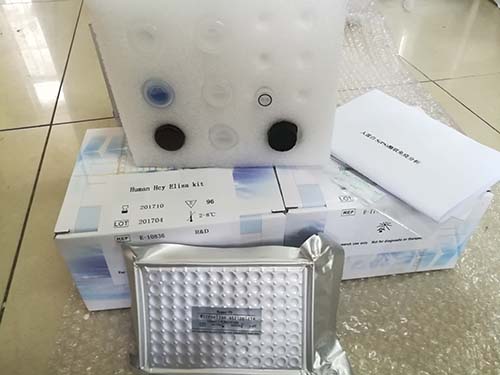Vibrio vulnificus nucleic acid detection kit (one-tube PCR-fluorescence probe method) â—† Product Description The pathogen detection series can amplify specific nucleic acid fragments of pathogenic microorganisms in food, feed and other samples, and the instrument monitors the fluorescence signal changes during the amplification process in real time and automatically interprets the results. This product is used for the detection of Vibrio vulnificus. The detection limit is 10 3 CFU/ml . â—† Product composition (96 test) 011022LII Reagent content A-VV-P 20μL × 8 tubes × 12 rows NG-P 100μl × 3 PG-VV-P 100μl × 2 â—† Applicable instruments Real-time fluorescence PCR instrument such as ABI 7500, CFX 96, Mx 3005P, LineGene9600. â—† Self-supplied supplies and instruments 1 ice box; 2 pipettes (0.5-10μL, 10-100μL, 100-1000μL) and matching sterilization tips; 3 centrifuges; 4 vortex mixers; 5 metal baths; 6 homogenizers, mixers or Grinding tools such as mortar; 7 electronic balance. â—† Notes 1. This reagent has high detection sensitivity. In order to prevent pollution, the experiment is to be partitioned. 1) First zone: sample preparation zone. 2) The second zone: the template addition zone. 3) Zone 3: Amplification and product analysis zone. ★ It is best to physically isolate the partitions to avoid contamination caused by human factors. 2. Work clothes and latex gloves are worn during the experiment, and tools are used independently in different areas. Gloves and lab coats need to be replaced. 3. Strictly follow the operation steps, reagent preparation and sample loading steps, please operate in strict accordance with the instructions on the ice box. 4. The components in the reaction solution are sensitive to light and should be stored away from light . The reagent should be completely thawed before use, but repeated freezing and thawing should be avoided. It is recommended to centrifuge for 30 seconds before use, and store the reaction solution in an appropriate volume according to the frequency of detection. 5. After the reaction is completed, the expansion tube should be placed in a sealed bag and discarded. On the same day, the lid is opened and the aerosol is easily contaminated. It is forbidden to open the lid. 6. Do not mix different batches of reagents used within the validity period. â—† Sample processing The sample was treated with reference to "NMKL No. 156", and the sample was pre-enriched, and the prepared bacterial solution was stored for use. Take 20 g (ml) of the sample aseptically, add 200 ml of 2% sodium chloride basic protein, water, homogenize for 1 min at 8000 rpm with a rotary blade homogenizer, or tap the homogenizer After 2 min, shake well at 42 °C ± 1 °C for 18 h ± 2 h. For detailed steps, please follow the standard operation or check the food safety software. â—† Experimental operation 1. Template preparation (sample preparation area) It is recommended to use the reagents to support the bacterial DNA extraction series of products. The specific process is detailed in the product manual. 2. Add a template (sample preparation area, placed in an ice box) Cut the PCR tube containing the reaction number, and place it at room temperature to be thawed. After centrifugation for 30 seconds, uncover the sealing film. Add 5 μL of template to each reaction solution in the order of NG, sample template to be tested. , PG-VV-P. After the matching PCR tube cap was covered, the mixture was vortexed for 30 s, centrifuged for 1 min, and the PCR amplification reaction was immediately performed. 3. Amplification reaction (amplification and product analysis area) Using a real-time PCR instrument, the fluorophore was selected for FAM and the quencher group was selected for TAMRA. Set up the amplification reaction according to the following conditions: PCR cycle Fluorescence collection site 95 ° C 3 minutes 1 cycle - 94°C 5 seconds 40 cycles - 60 ° C 40 seconds ※ 4. Baseline and threshold settings The baseline adjustment takes 3-15 cycles of fluorescence signal and the threshold line should exceed the highest point of the negative control amplification curve. â—† Result judgment The test sample Ct ≥ 40.0, the curve is a straight line or a slight oblique line, there is no "S" type amplification curve, the sample can be reported negative, does not contain Salmonella or the content is below the detection limit; The test sample has Ct≤35.0, and the curve shows an “Sâ€-type amplification curve, which can determine that the sample is positive and contains Vibrio vulnificus; The test sample 35.0 < Ct < 40.0, a repeated experiment is required, and if the Ct value is ≥ 40.0, it is negative, otherwise it is positive. Self-Testing SARS-CoV-2 Antigen Detection Kit (Colloidal Gold-Based) SARS-CoV-2 Antigen Detection Kit applies immunoassay that uses highly sensitive monoclonal antibodies to directly detect the presence of virus. With detailed instructions and customized components, people can easily finish the detection process and rapidly get results in 10 mins. This test kit It is suitable for users over 15 years old. Children aged 2 to 15 must be swabbed and tested by an adult ( ≥ 18 years old). In addition, this kit can apply to various specified sites and scenarios Self-Testing SARS-CoV-2 Antigen Detection Kit (Colloidal Gold-Based) NINGBO AUTRENDS INTERNATIONAL TRADE CO., LTD , https://www.metests.com